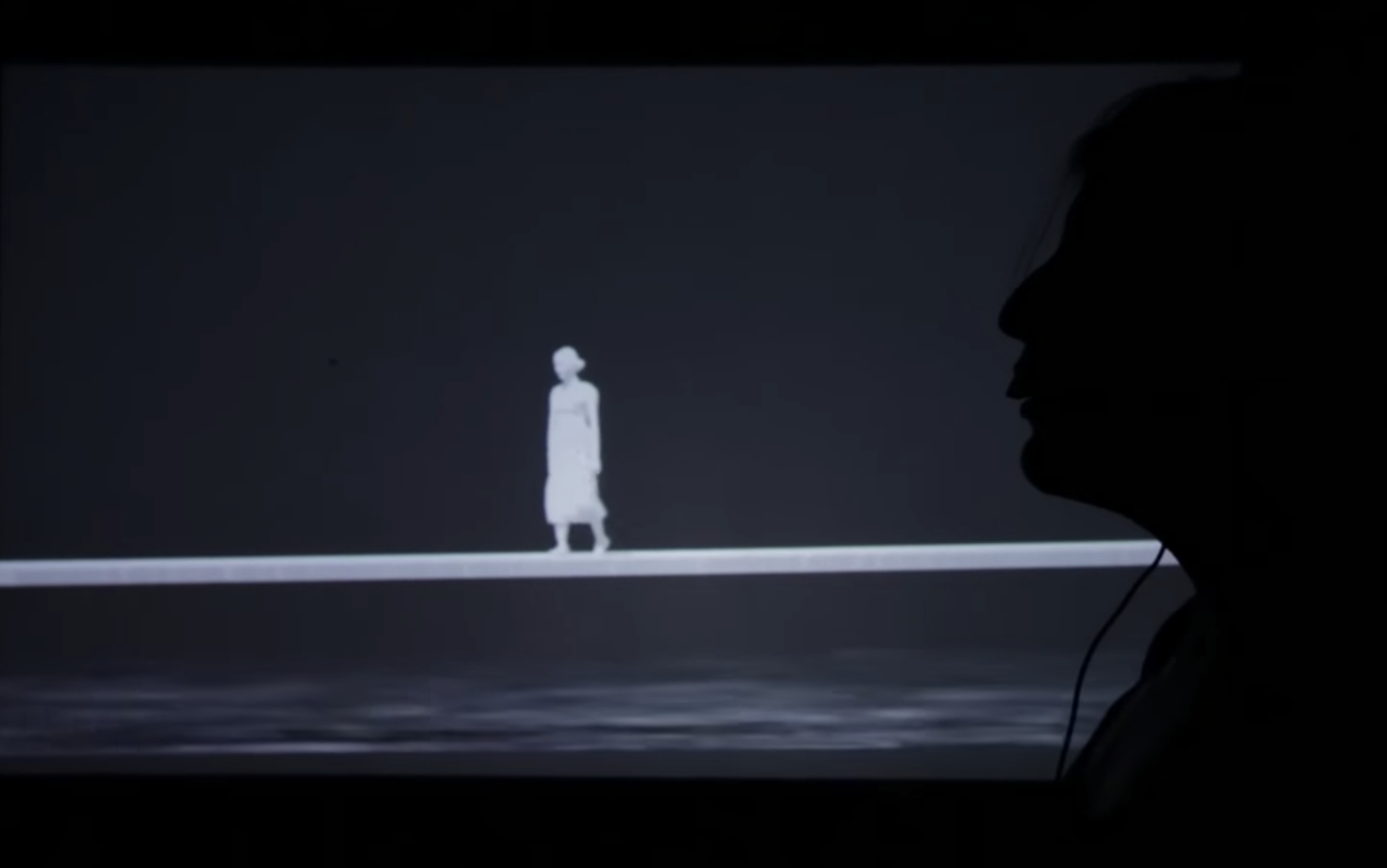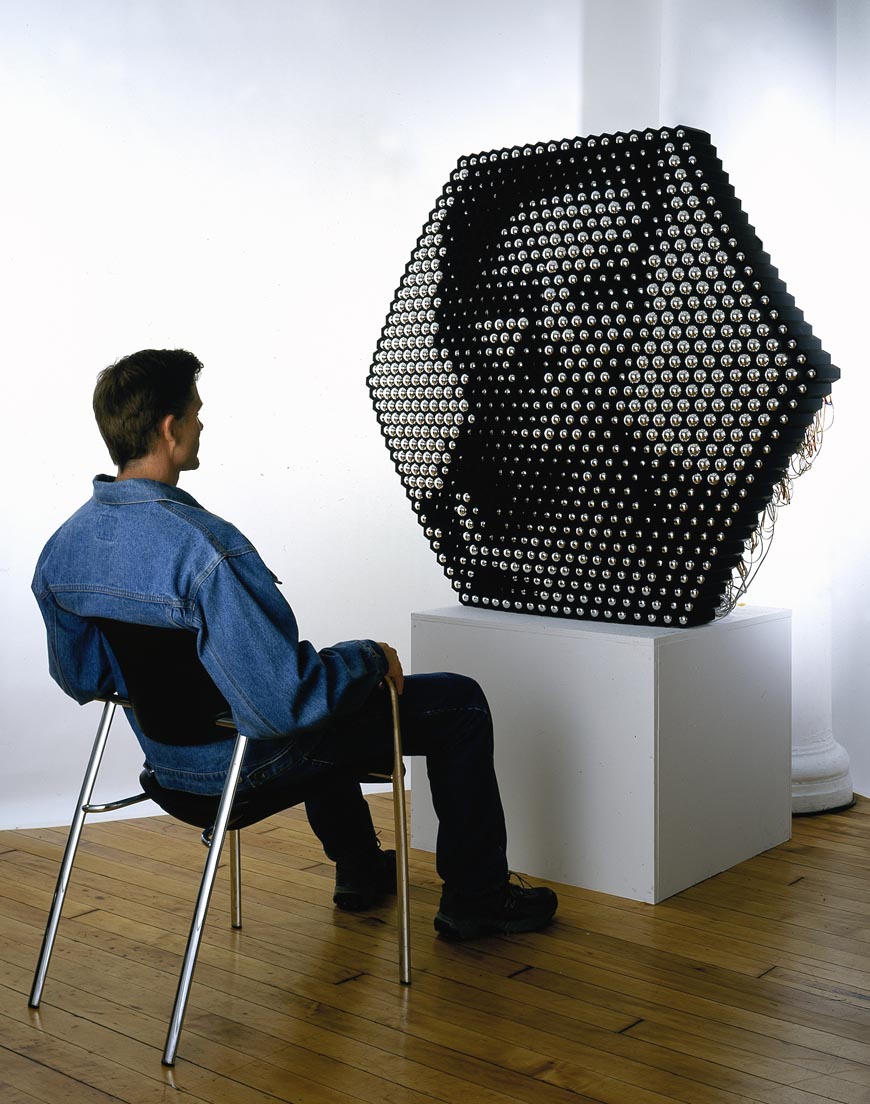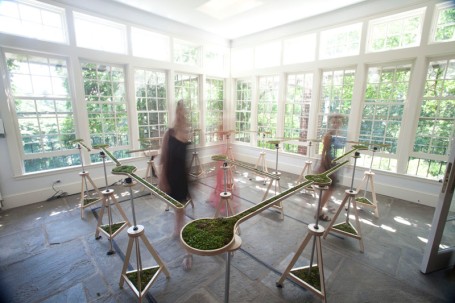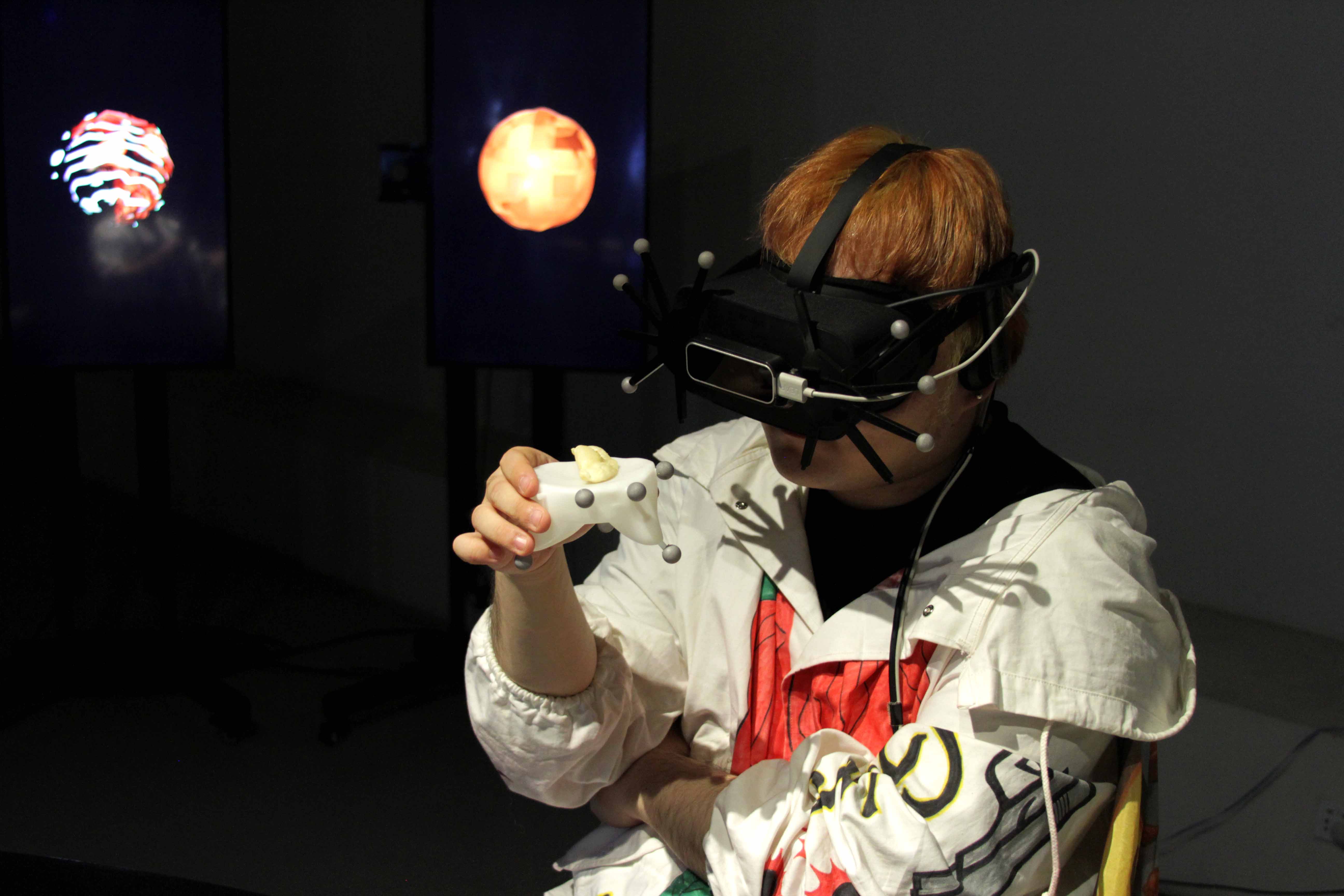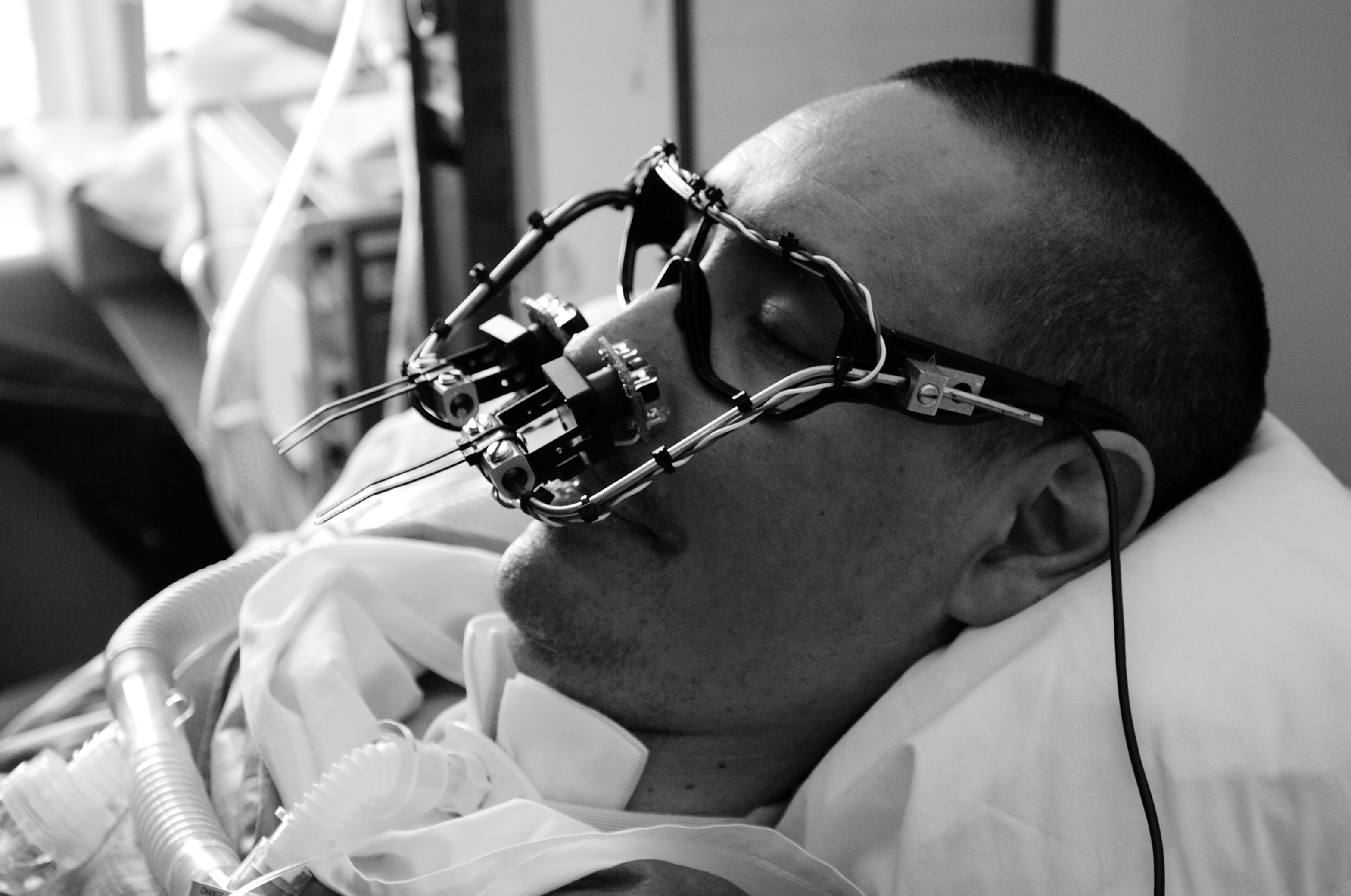
This is an interactive installation work by Camille Utterback from 2013 entitled Flourish. It is a series of 7 glass panels, each with 2 layers, and 3 of which are interactive. The combination of colors and textures creates a sense of depth which is heightened by lights that respond to viewers' movements and travel between the panels. I'm inspired by the combination of materials and ideas in this piece. Painting, sculpture, interactivity, time-based media, and glass-work are all being combined to create what I see as a living painting with an incredible sense of depth. It's hard to know without seeing the piece in person, but I wish all of the panels were interactive, though perhaps it is more surprising if only a few are. I think the image of the tree is a bit cliche, and that the more abstract but still very natural elements of the rest of the panels are much more compelling. The idea of creating interactive paintings that change over time is one that is exciting to me, particularly coming from a painting background myself.


 Daniel Rozin has created many mechanical "mirrors" using video cameras, motion sensors, and motors to display people's reflections. I had seen the popular
Daniel Rozin has created many mechanical "mirrors" using video cameras, motion sensors, and motors to display people's reflections. I had seen the popular 
